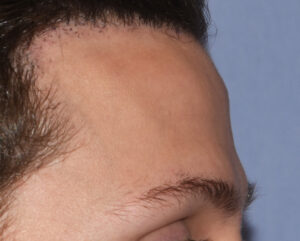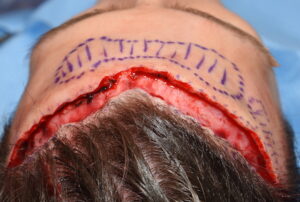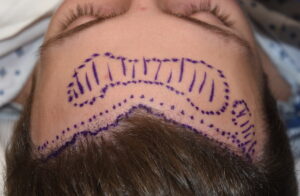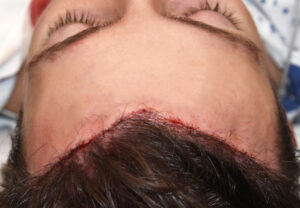Background: There are multiple hard and soft tissue reduction procedures that can be done to the forehead. Bony reductions include such prominences as frontal bossing and forehead horn reduction to name some of the most commonly done. The only soft tissue forehead reduction procedure is a frontal hairline advancement.
Each one of these forehead reduction procedures involves an incision but there locations are different. By definition the frontal hairline procedure has a well known incision location right at the edge of the hairline. Conversely most bony forehead reduction procedures use an incision behind the frontal hairline in an effort to hide its location. In some forehead reduction procedures one can use a frontal hairline incision which is closer to the target site if the patient can accept this scar location.
Rarely there arises a patient who needs a combined bony and soft tissue forehead reduction. In this case the extended frontal hairline incision provides ideal access to the entire forehead and more complete visualization of the bony reduction needed.
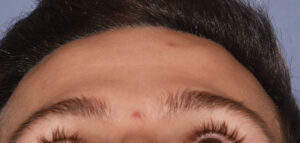
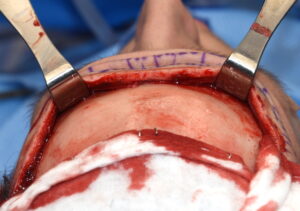
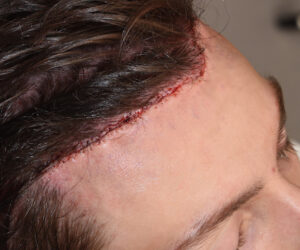
Like ant other part of the face or body, combinations of changes to a given area produces the most significant changes. The forehead is not exception and being able to do both through a single incision is certainly a bonus.
Case Highlights:
1) Reduction of prominent forehead horns is ding by a burring technique which requires close incisional access.
2) A concurrent frontal hairline advancement provides the most direct access o any form of forehead contouring.
3) Unsatisfactory frontal hairline hair transplants can be removed/improved by a frontal hairline advancement.
Dr. Barry Eppley
Indianapolis, Indiana




